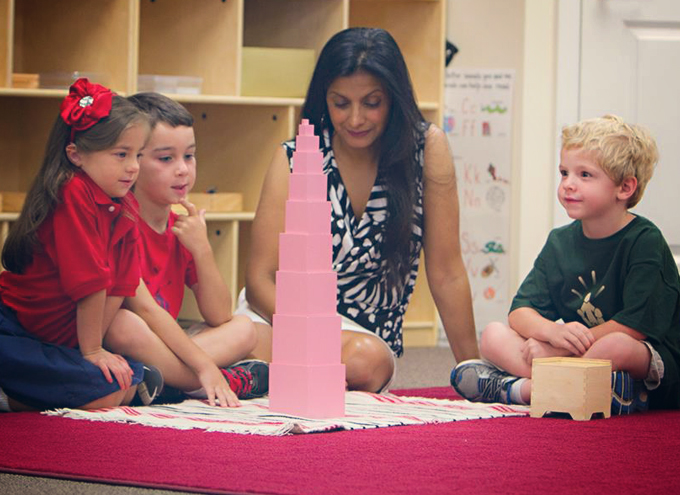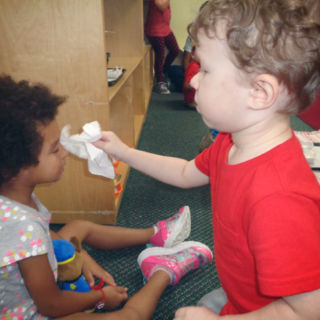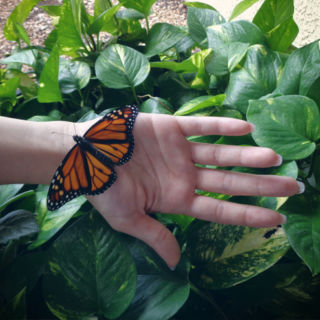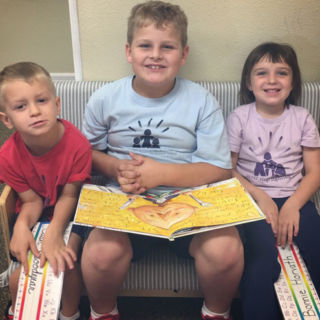
Contribution by Sandra D’Amico
The prepared Montessori environment is designed purposely to promote independent learning and exploration. This calm, well-ordered environment stimulates movement and activity. Children are free to choose and work on activities at their own pace. Here, they experience a combination of freedom and self-discipline as guided by the environment.
The principles of the Prepared Environment are freedom within limits, structure and order, beauty, nature and reality, social environment and intellectual environment. The prepared environment is vital to the success a child experiences with Montessori education.
When we speak of the prepared environment, there is so much to consider, beginning with the physical space. The prepared environment is a nourishing place designed to meet the child’s needs for self-construction, and to reveal his personality and developmental patterns to us. The child by nature is an avid explorer. This prepared environment gives the child the freedom to live in it and absorb what he finds there. He has a freedom to explore, discover, and to be creative. The child gains independence as he moves about freely choosing his own work and making his own decisions. This is a place where the child can be free to respond to their natural tendency to work.
Here in our school’s prepared environment, there is an abundance of beauty, order, accessibility and availability of real materials with a purpose, as opposed to toys. There are no assigned desks for the children or the teacher. The classroom is set up for the proportions of the child (from sinks to chairs and tables). The open shelves are at the child’s level and arranged in very deliberate and scientific way so that the work is in sequential order by level of difficulty and uncluttered with regular but gradual distinctions. Every object has a special location. Every lesson has a purpose and continues to directly, as well as indirectly, prepare for the next lesson or lessons to come. The materials in Practical Life develop motor skills and coordination as well as balance. The walls are not showy or detract from the materials. The abundance of natural light and the purposeful placement of the windows afford children to take in nature or daydream. Development of sensorial perceptions of color, size, shape, temperature, sound, texture, smell and weight all enlarge the field of awareness and offer a solid foundation for intellectual growth. The work is inviting, attractively aesthetic and colorful to invite the child’s exploration. The work alone is not just interesting but leads to purposeful activity and increasing levels of exploration and concentration, thus growth.
The first aim of the prepared environment is, as far as it is possible, to render the growing child independent of the adult.
— Maria Montessori, 1966 “The Secret of Childhood”



